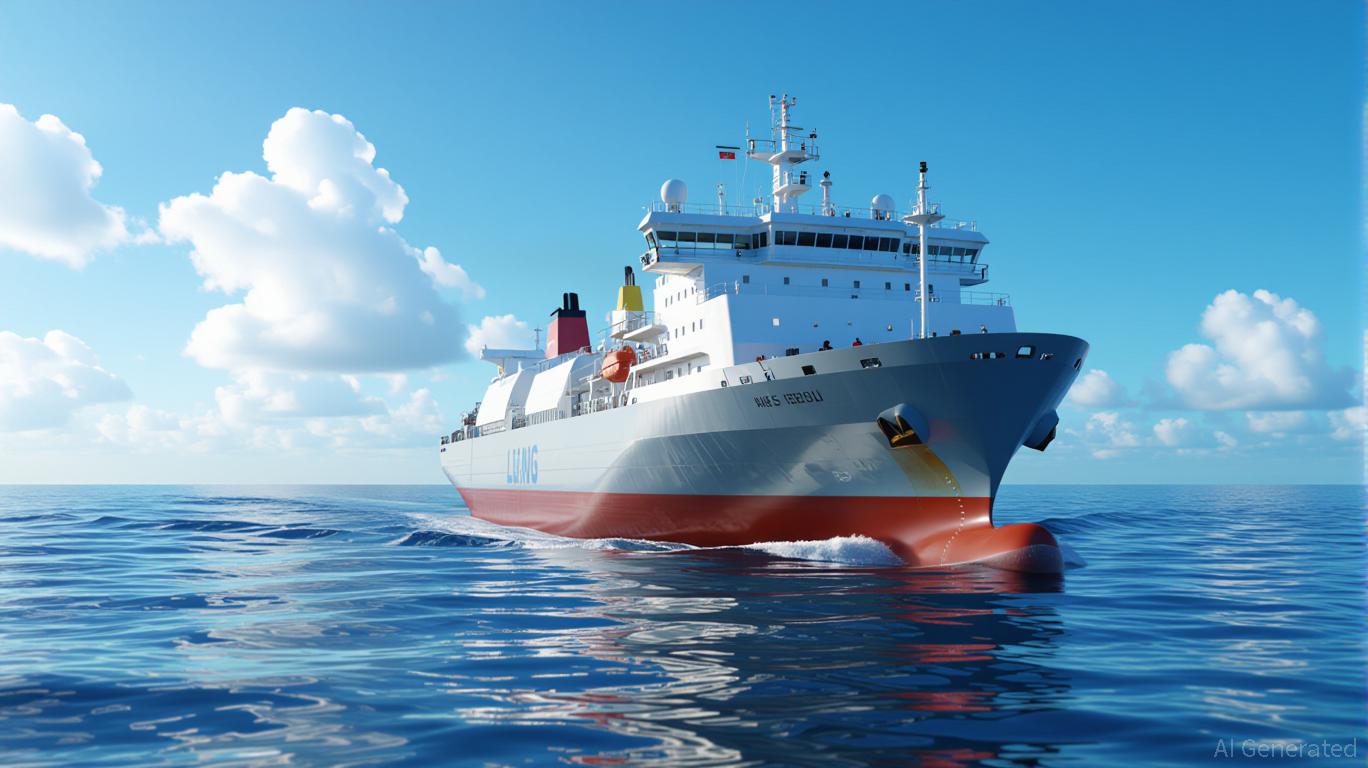
In the volatile world of liquefied natural gas (LNG) shipping, Flex LNG Ltd. (FLNG) has made a bold move to signal confidence in its long-term prospects. On August 20, 2025, the company announced a $50 million share buyback program, a significant step in its ongoing balance sheet optimization strategy. This initiative, coupled with recent refinancing efforts and a disciplined approach to capital allocation, raises critical questions about its ability to create shareholder value amid a cautious global LNG market.
The Buyback: A Signal of Confidence or a Response to Pressure?
Flex LNG’s $50 million buyback program, authorized by its Board of Directors, allows the company to repurchase up to 900,000 shares through November 27, 2025. The program is executed through open market transactions on the Oslo Stock Exchange (OSE) and the New York Stock Exchange (NYSE), with compliance to both EU and U.S. securities regulations. This move follows a Q2 2025 earnings report where the company exceeded revenue and earnings expectations, despite a challenging macroeconomic environment.
The buyback is part of Flex LNG’s broader Balance Sheet Optimization Program 3.0, which includes debt refinancing, liquidity preservation, and shareholder returns. With $413 million in cash and a robust contract backlog spanning 56 to 85 years, the company appears well-positioned to execute the program without compromising operational flexibility. However, the decision to prioritize buybacks over newbuilding investments—given the high costs of LNG carrier construction and uncertain demand—highlights a strategic pivot toward capital efficiency.
Deleveraging Amid High Debt: A Double-Edged Sword
Flex LNG’s debt-to-equity ratio of 2.14 (as of March 2025) remains elevated, reflecting its reliance on long-term debt to fund operations. While the company’s EBIT of $193.1 million supports an interest coverage ratio of 2.2x, this metric is modest for a capital-intensive industry. Recent refinancing activities, including a $175 million 10-year sale and leaseback for the Flex Courageous, have extended debt maturities to 2035 and reduced refinancing risk. These moves have generated $132 million in liquidity, but they also underscore the company’s need to manage leverage in a sector where interest rates and commodity prices remain volatile.
The buyback program, while a positive signal for shareholders, must be evaluated in the context of Flex LNG’s high leverage. Critics argue that repurchasing shares at a 12x trailing P/E ratio (as of August 2025) could strain liquidity if market conditions deteriorate. However, proponents counter that the company’s long-term charter backlog—covering 85.7% of its 2025 revenue—provides a stable cash flow foundation, making the buyback a prudent use of capital.
Strategic Rationale: Shareholder Returns vs. Growth Opportunities
Flex LNG’s dual focus on dividends and buybacks—offering a 12% yield and a $50 million repurchase—reflects its commitment to capital returns. This approach is particularly compelling in a market where newbuilding opportunities are constrained by high interest rates and regulatory uncertainty. The company’s CEO, Mads Zacho, emphasized during the Q2 earnings call that “speculative new orders are not justified without long-term contracts,” a stance that prioritizes financial prudence over aggressive expansion.
However, this strategy carries risks. The LNG market is cyclical, and while Flex LNG’s contract backlog insulates it from short-term volatility, it also limits flexibility to capitalize on near-term rate spikes. Additionally, the company’s decision to delist from the Oslo Stock Exchange in September 2025—aimed at reducing administrative costs—could be seen as a sign of confidence or a defensive move to streamline operations.
Investment Implications: A Buy for the Long-Term?
For investors, Flex LNG’s buyback program and deleveraging efforts present a nuanced case. The company’s strong liquidity, extended debt maturities, and disciplined capital allocation strategy position it as a resilient player in a sector prone to volatility. However, its high debt levels and reliance on long-term contracts mean that it is not without risks.
Key considerations for investors:
1. Valuation Attractiveness: At a 12x P/E and with a 12% dividend yield, Flex LNG’s shares appear undervalued relative to its earnings potential and industry peers.
2. Balance Sheet Strength: The $413 million cash position and extended debt maturities provide a buffer against market downturns.
3. Market Exposure: The LNG sector’s long-term growth is tied to energy transition dynamics and geopolitical shifts, which could either amplify or dampen returns.
Conclusion: Conviction in a Cautious Market
Flex LNG’s $50 million buyback program is a strategic move to reinforce shareholder confidence and optimize capital structure. While the company’s high leverage and cautious approach to newbuilding investments may deter some investors, its focus on liquidity preservation, contract visibility, and disciplined returns aligns with long-term value creation. In a market where volatility is the norm, Flex LNG’s ability to balance risk and reward will be critical. For investors with a multi-year horizon and a tolerance for sector-specific risks, the company’s current trajectory offers a compelling case for conviction.
Final Verdict: Flex LNG’s buyback and deleveraging efforts are a calculated response to a cautious market. While not without risks, the company’s financial discipline and long-term contractual visibility make it a potential outperformer in the LNG sector—if it can navigate the next phase of market uncertainty without overextending its balance sheet.
